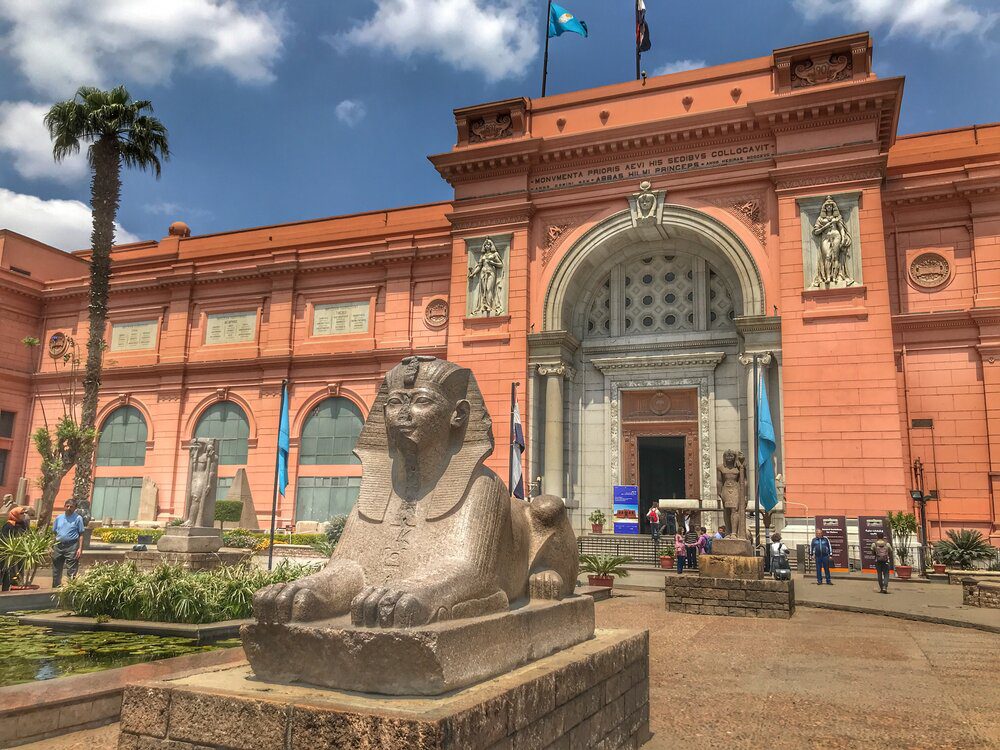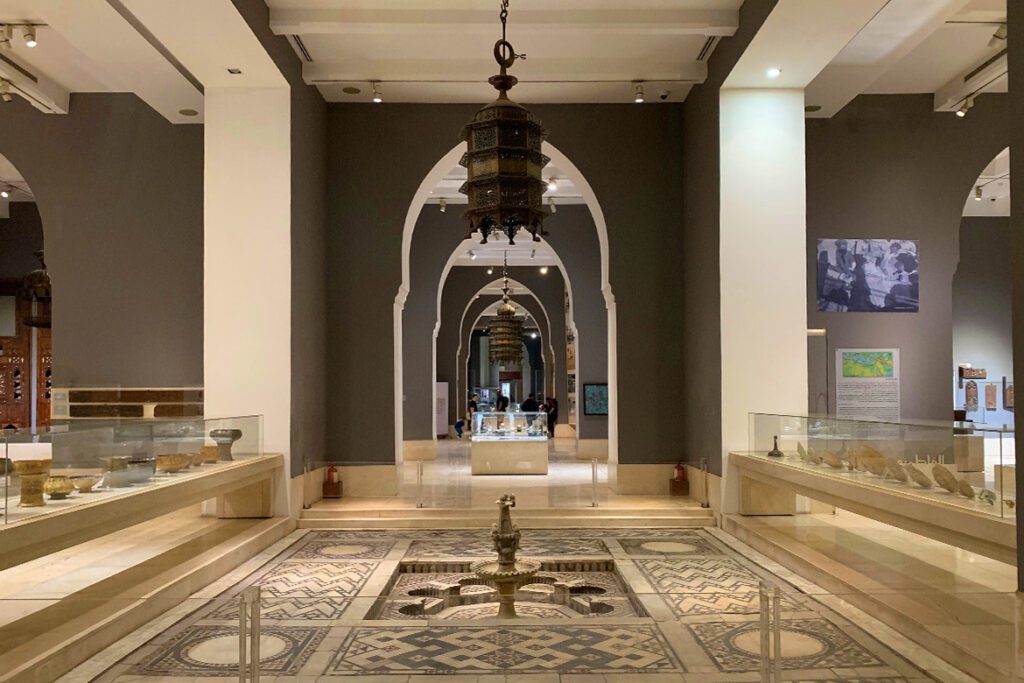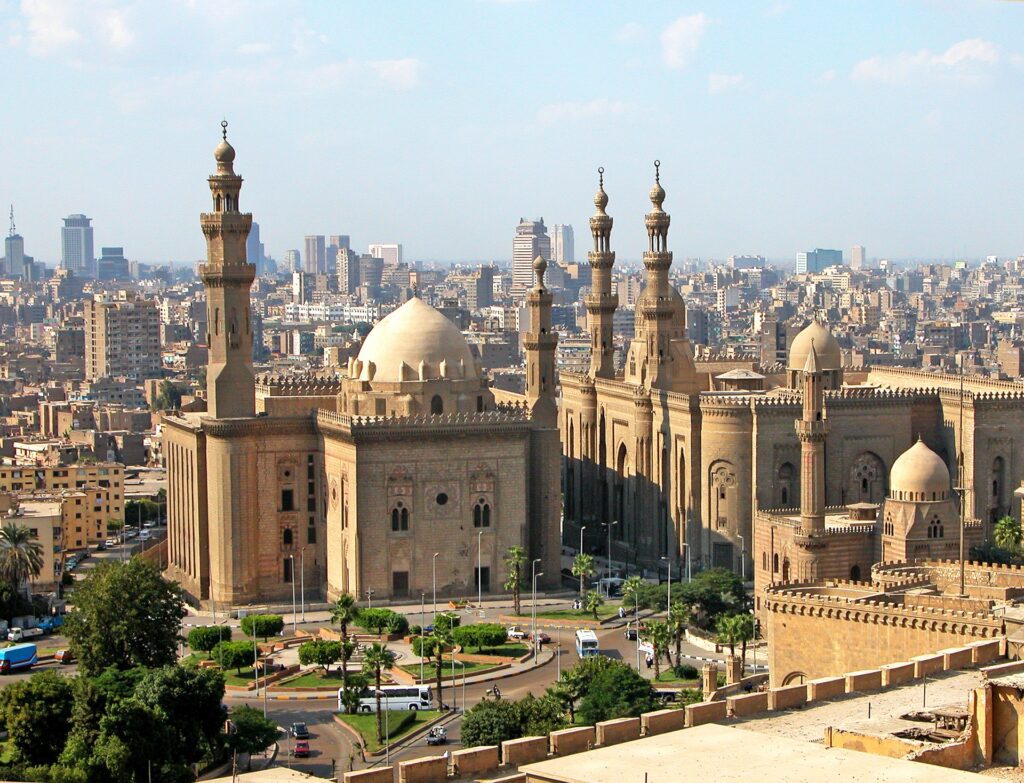Cairo Travel Guide
Introduction
More extensive than any other city in the Middle East or Africa, Cairo stretches ever further along the east bank of the Nile for more than 35km (20 miles), guarding the head of the Delta and marking the division between Upper and Lower Egypt (Lower Egypt being the Delta in the north, as the Nile flows from south to north). Across the river is Giza, home to the Pyramids, which is technically a spa. It is a rate administrative district but part of the same urban agglomeration as Cairo. In the river between Cairo and Giza are two islands: Roadah, formed out of bed-rock, which has been the site of human settlement since ancient times, and Gazirah, formed alluvially within the past six centuries, where the suburb of Zamalik has grown up since 1870. While Cairo seems to be one vast urban sprawl, if you break it down into its neighborhoods, it is, in fact, quite manageable. Downtown is the center for business, as well as the Egyptian Museum and five-star tourist hotels along the Nile. To the east lie the labyrinthine roads of Islamic Cairo, with beautiful mosques and many architectural gems. To the south is where you will find the Coptic community and Cairo’s oldest synagogue, while to the west is cosmopolitan Zamalek, home to the fashion-conscious with trendy cafés, restaurants, boutiques, and clubs. After almost a decade of political turmoil, visitors are finally returning to Egypt. Hotels are full, boat trips along the Nile require a waitlist to book once again, and the highly anticipated Grand Egyptian Museum promises to draw even more tourists when it opens its doors within the next year or so.
How To Get Around Cairo
Cairo’s metro system is a well-oiled machine and is easily the cheapest way to get around. Fares start at just three Egyptian pounds (around 17 cents) and increase depending on the distance you’ve traveled to a max of seven pounds (around 40 cents). Considering the city’s notorious traffic, it is often the fastest way to travel. Just note that you must submit your bags to an x-ray machine and pass through a metal detector before entering the stations. There are also women-only cars on each train, so pay attention to signage if you’re a female traveler and want to hop on one of them.

In many places worldwide, you’re expected to haggle flat rates with cab drivers before you get in the taxi to secure the best fare and ensure they don’t upcharge you at the end. In Cairo, that’s not the case. Many drivers will happily accept a negotiated flat rate, but you’ll often end up paying more than what the metered fare would come out to be. Clarify with your driver that your ride will be metered before getting in the cab. Additionally, some drivers will double dip into the passenger pool and pick up multiple parties along the way, so if you flag a taxi and the car rolls up with people already inside, you can wave the driver along. And for what it’s worth, there is Uber in Cairo, and it’s pretty affordable.
Highlights of Cairo
Africa’s largest city can be overwhelming; the heat, dust, and noise are constants, and the traffic is often at a standstill. That said, its boundless energy and extraordinary history will draw you in. Here, we give a selection of Cairo’s many highlights.
Tahrir Square (Liberation Square)
Tahrir Square is now familiar as the place where thousands of people came to protest against President Mubarak’s corrupt regime. It was also the place of great jubilation in June 2012, when hundreds of thousands of Egyptians celebrated the results of Egypt’s first-ever democratic elections when Mohammed Mursi, head of the Muslim Brotherhood party, became president.

Created in the 19th century, the square is surrounded by an ocean of traffic, with the pink building of the Egyptian Museum to the north and the Nile Hilton (currently under renovation) on the western perimeter. Other significant buildings include the Mosque of Umar Makram, used for funerals of important Cairenes, a Soviet-style building devoted to Egypt’s notorious bureaucracy, and the former American University in Cairo.
Egyptian Museum of Antiquities

On the north side of Tahrir Square is the Egyptian Museum, one of the greatest museums in the world. Purpose-built in 1902, the pink neoclassical museum was designed to house the collection begun by French archaeologist Auguste Mariette in the mid-1850s. A brand-new, state-of-the-art museum, the Grand Egyptian Museum (www.gem.gov.eg), has finally commenced construction on the Giza Plateau. Costing over £320 million, it will house, among other things, the collection’s masterpieces, but it is not billed to open before 2014.
Museum of Islamic Art

The Museum of Islamic Art is about a mile east of Tahrir Square. The collection, dating from the 1880s, was mostly salvaged from mosques, madrasahs, and palaces in Cairo’s Old City and is considered one of Islamic art’s finest. Exhibits are well presented and date from the 7th to 18th centuries. They range from exquisitely designed swords and functioning fountains to intricate mashrabia (wooden latticework), chandeliers, and a carpet.
Khan al-Khalili

Cairo’s marketplace, Khan al-Khalili, still buzzes with the atmosphere of a medieval souk. Narrow alleyways brim with copper, gold, leather, and alabaster, and the streets are packed with barrow traders passionately touting for customers. If you search hard enough, you will still find magnificent examples of small crafts. The area around Khan al-Khalili is one of the Middle East’s largest marketplaces and has been so for almost a thousand years.
Islamic Cairo

Home to several famous mosques, this part of the city is known popularly as ‘Islamic Cairo’ – but it is much more. For centuries, the seat of EgypEgypt’sers and a significant outpost of many Islamic empires have contained some of the finest architecture in the Muslim world. The architecture lining the streets of Islamic Cairo features exquisite stone carving, delicate woodwork, copper and brasswork, and ceramic tiling. Among the many superb buildings from this period are mosques, madrassas (religious schools), khans, and baits (private homes).
Mosque of al-Nasir Mohammed
Of particular note is the Qalawun, al-Nasir Mohammed, and Barquq Mosque Complex, situated on Sharia al-Muizz li-Din Allah, the main artery of Fatimid Cairo. Started in 1285, its long facade is an architectural jewel. The mausoleum of the Mamluk sultan al-Mansur Qalawun, who died in 1290, is at the heart of the complex, surrounded by beautiful Islamic fretwork screens and surmounted by a superb dome. Don’t miss the vDon’tfrom the terrace opposite the entrance to the mosque.
Gayer-Anderson Museum
This museum contains outstanding Islamic and European furniture, arts, and handicrafts. The English major and army doctor John Gayer-Anderson served as a physician to the royal household from 1935–42 and was an avid collector of oriental furniture, paintings, and objects d’art. He also dartingly restored and joined the two 16th-century buildings that house the collection and ‘themed’ them in different’ oriental styles from Damascene and Moorish to Persian.
Mosque-Madrassa of Sultan Hassan
The street Maydan Salah ad-Din is lined with grand mosques, the most beautiful of which is the splendid Madrassa of Sultan Hasan, a masterpiece from 1362. Four separate schools are arranged around its large central courtyard, each with its portal and inner courtyard. The minaret on the southwest corner is the tallest in Cairo at 81m (265ft).
Medieval Cairo
With over 850 listed monuments packed into a few square kilometers, medieval Cairo is one of the most heritage-rich enclaves in the world. For many, it is Cairo’s most fascinating quarCairo, a world away from the modern downtown area. Centered on medieval Cairo’s principal thoroughfCairo’sari’ Al Mu’ez Li DinillahShari’lk hMu’ezill take you back in time. Like market-goers for millennia, you still need to dodge the donkey carts clattering down the alleyways. In the souks, the smell of aromatic spices and cooking food still tickles your nose, and the air is filled with the cries and banter of the jellaba-clad vendors.
Extending from the old gate of Bab Zowaylah in the south to Bab Al Futuh in the north, Al Qahirah, as it’s known in Arabic, is it’ll be preserved atmospherically as it is architecturally and is quite simply one of the finest medieval cities in the world.
Coptic Cairo

Coptic Cairo is one of the city’s hidden jewels. Thougcity’s quarter contains several precious churches, an absorbing museum, Egypt’s oldest synagogue, and Egypt’s first mosque. The enclave is also atmospheric, picturesque, and peaceful, showing a very different side of the city. Known locally as Misr Al Qadimah (Cairo the Old), Coptic Cairo is one of the oldest continuously inhabited neighborhoods in the city, with settlements dating back to the 6th century BC. In the 2nd century BC, the Romans chose it as the site of a fortress known as ‘Babylon-in-Egypt.’ As the ma’am indicates, the area was once the center of a large and flourishing Christian community, including a 13th-century icon ‘factory’ and at least two dozen churches that medieval pilgrims much visited. Today, just a cluster remains.
Coptic Museum
This collection covers all aspects of Coptic art and worship, from vestments, tapestries, early handwritten Bibles, and painted icons to ornate stone niches and wood-carved ceilings taken from churches and monasteries all over Egypt. These artifacts beautifully illustrate the development from Ancient Egyptian to Christian art.
More about the Coptic Christians…
The Coptic church was established in the early years of Christianity, and today, almost 10 percent of Egyptians are Copt. It is defined as ‘Egyptian Christians’; Copt’s book is directly derived from the Ancient Egyptians and is one of the earliest adoptions of Christianity.
Egyptian Christians separated from the Orthodox Church of the Byzantine Empire in 451, following a dispute over Christ’s nature (the Copts believed Christ’s monophysite – wholly divine – not both human and divine). Copts contributed invaluably to the development of early Christian doctrine and theology and are also credited with the creation of monasticism. Today, the Copts are mainly known for forming two major social groups: an educated elite, often wealthy and influential, and some of Egypt’s poorest members, including the ZabbEgypt’sCairo’s rubbish collectors.










